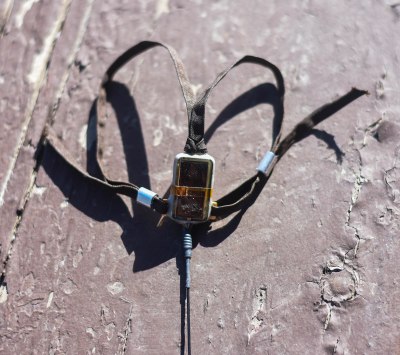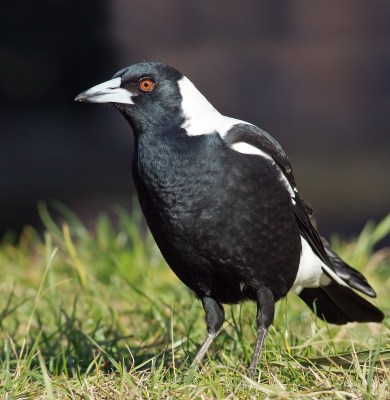Magpies Help Each Other Escape Tracking Devices With This One Weird Trick
Scientists who work with animals love to track their movements. This can provide interesting insights on everything from mating behaviour, food sources, and even the way animals behave socially – or anti-socially, as the case may be.
This is normally achieved with the use of tracking devices, affixed to an animal so that it can be observed remotely while going about its normal business. However, Australian scientists have recently run into some issues in this area, as the very animals they try to track have been removing these very devices, revealing some thought-provoking behaviour in the process.
Teamwork Makes The Dream Work

The findings came about as part of research by Joel Crampton, Celine H. Frère, and Dominique A. Potvin, with the trio running a pilot study on a new novel tracker design aimed to better suit smaller bird species. Historically, most common bird trackers have been too large to fit on medium to smaller species of bird, and while some solutions do exist, they have typically suffered in regards to their data capacity or their battery life.
The new trackers under trial held GPS hardware, and weighed less than a gram. They were designed to operate in concert with a outdoor feeding station. This feeding station could wirelessly download data from the trackers as the birds came to eat, removing the need to recover the trackers from the birds to collect data. The station could also wirelessly charge the batteries of the tracker for longer-term use.
A special harness was designed to hold the trackers on the birds, using a magnetic clasp. This would allow the harnesses to be released from the birds when needed by simply fitting a magnet to the feeding station. The harness was considered to be a stout and hardy design by the research team, who expected it could only be removed with the use of a magnet or a decent pair of scissors. Magpies were to be the subjects of the trial, and as these birds have access to neither of these tools, it was expected that the trial would run smoothly.
Best Laid Plans And All That

Five magpies were outfitted with the tracking devices, with the team eager to start collecting data. However, almost immediately, things went awry. Just ten minutes after fitting the last magpie with a harness, the researchers observed curious behaviour from the birds.
An adult female that had not been fitted with a tracker was attempting to remove the harness from a younger bird, using its bill to try and get it off. Hours later, the birds had removed almost all the trackers, with the dominant male having its removed by the other birds by the third day of the study.
Talking to the New York Times, Potvin noted the speed with which the study went off on a tangent. “The first tracker was off half an hour after we put it on,” said Potvin. The birds worked together. The magpie with the harness held still while the other went to work with its beak. In less than 20 minutes, the helping magpie had identified a clasp as the weakest point on the harness, cutting it to free the other bird.
The birds had clearly decided they did not appreciate the tracking devices, and worked together to remove them. The team didn’t directly observe all the harnesses being removed, and it’s unclear if the result was the action of just one bird or whether several developed techniques to remove the devices.
The key thing that stood out was the collaborative “rescuing” behaviour on show. Other birds in tracking studies hadn’t really been seen to work together to remove such devices before. The only clear allegory cited by the research team was the case of the Seychelles warblers helping each other remove seed clusters that were particularly adept at sticking to their feathers.
Potvin posits that the behaviour is a good example of the cooperation often seen in social animals. Birds and other animals that live in groups tend to work together for the betterment of the social group, often displaying altruistic behaviours to help each other without any immediate direct benefit.
Unexpected Learnings
In the short term, the ability of the magpies to free themselves has frustrated efforts to track the birds for conservation purposes. With increasing heat waves in cities putting pressure on the survival of magpie chicks, more work is needed to understand how to best protect these populations.
However, the researchers still came out learning something about the humble magpie, even if it’s not what they originally set out to investigate. That’s just the way science goes sometimes, and the trick is to write down what happens so that we can all benefit from the research!
Post a Comment